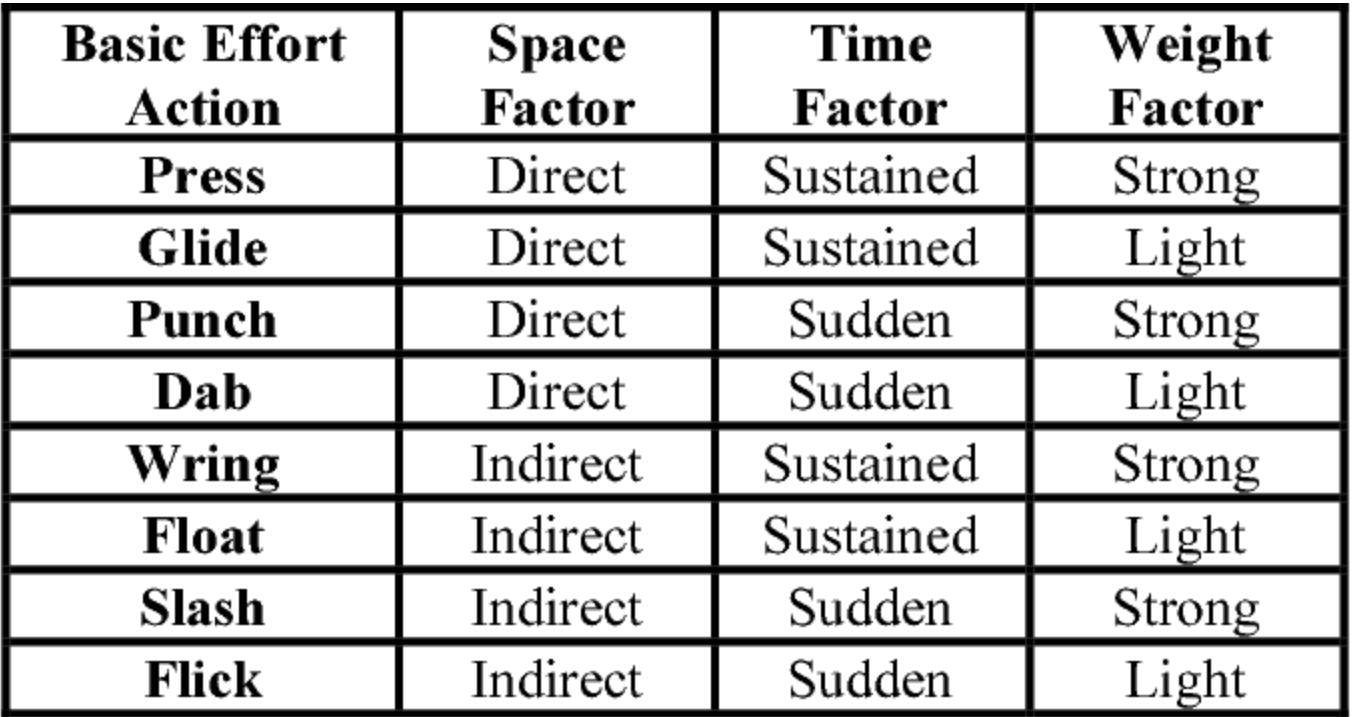Around 5 years ago I was introduced to a movement and dance technique known as Laban/Bartenieff Movement Analysis. If you investigate it for more than 1 to 2 seconds, you’ll notice that it heavily influenced Paradoxa and Arcane Exercise. As the Wikipedia article states, it’s “a method and language for describing, visualizing, interpreting and documenting human movement.” I learned about it while researching how to create better characters for Dungeons & Dragons, but that’s another story.
A central part of L/B Movement Analysis is the 4 categories of movement:
Body - what the body is doing and the interrelationships within the body
Effort - the qualities of movement
Shape - how the body is changing shape and what motivates it to do so
Space - where the body is moving and the harmonic relationships in space
Sound familiar?
More interesting yet are the combinations of categories that create a chart of different types of movements, each with descriptive names like Float, Punch (Thrust), Glide, Slash, Dab, Wring, Flick, and Press. These combinations, while on the surface vague and subjective, represent specific combinations of Body, Effort, Shape, and Space that can be used to create highly evocative and distinct movements.
Arcane Exercise supplement 100 Movement Mini-Quests, when combined with the Arcane Exercise Core Rulebook, is intended to create a similar experience of creative movement problem solving.
Why is categorizing movement in this way beneficial?
In Arcane Exercise, I categorize movement into Shapes and Modifiers:
Shapes are the primary shape the body takes, either static (Shape) or dynamic (Movement).
Modifiers are attributes that we can apply to Shapes or Movements to change how they are performed and what training quality we gain from them.
This type of movement subdivision removes ambiguity and clarifies intention—what are you trying to get out of an exercise? A clear idea of this pushes away the detritus of unnecessary movements and techniques, leaving only behind useful tools, while leaving space for individual morphological needs and personal preference.
The more specific we can be with the parts of our process, the more clear the whole becomes.




